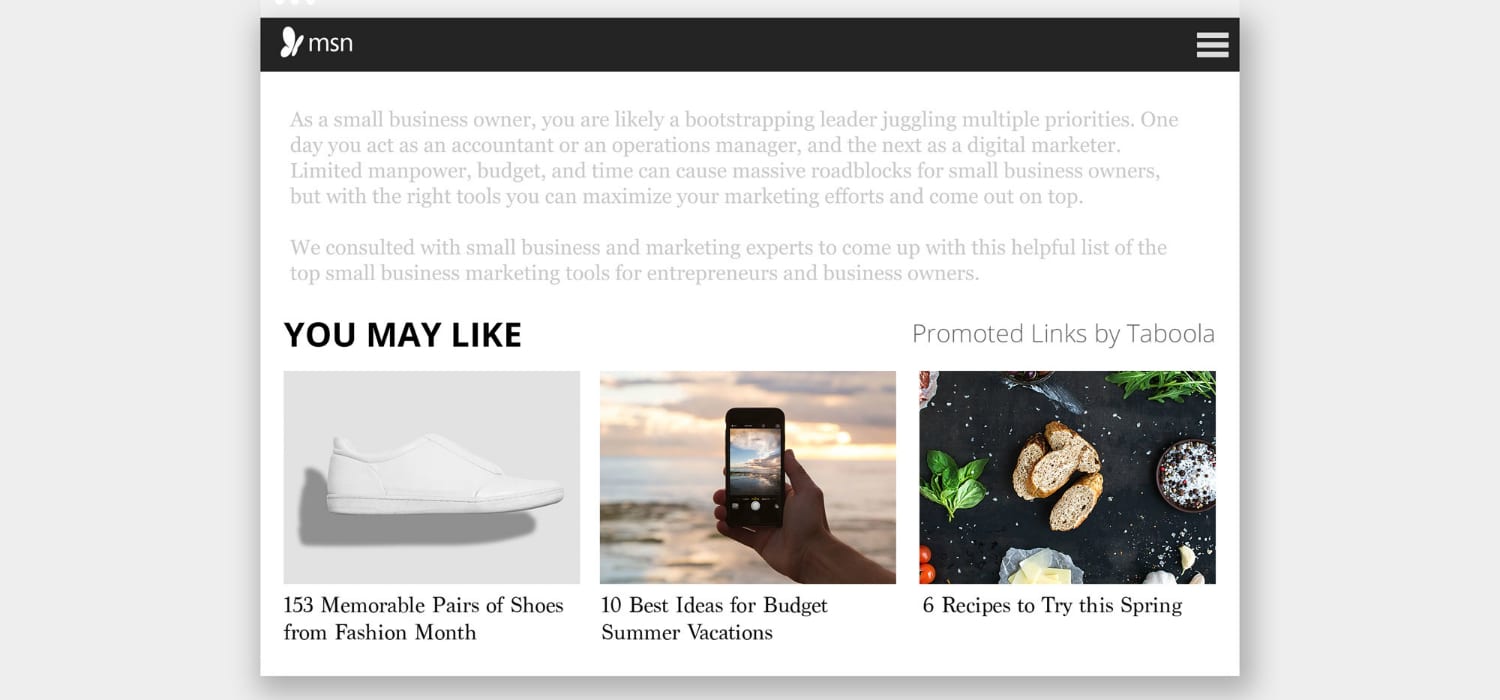Taboola and Google offer a lot of the same products for publishers and advertisers alike, but from our advertisers, we often get the question, “What’s your take on Taboola versus Adsense?”
One clarification here—this is the wrong question. Adsense is publisher product. What they’re really asking is our take on Taboola versus AdWords.
Publishers use Google’s AdSense platforms to monetize their content with ads from the Google Display Network (GDN). Like Taboola, AdSense matches ads to content—so if a fertilizer company has bought ads through Adsense, they’re be displayed through GDN with an article about gardening.
See also: Alternatives to AdWords (Google Ads)
What’s more important for advertisers to understand is that native advertising and search advertising are two completely different channel strategies—if you’re pitting Taboola versus Adsense, you’re thinking about it wrong. Each have their benefits, and the two can be complementary.
Taboola versus Adsense is the wrong question—you want to understand search versus native.
Search advertising is an incredibly powerful marketing tool, with one major flaw—it doesn’t work if your audience doesn’t know what they’re searching for.
If you sell furniture, and you’ve invested in Google AdWords results for words like “sofa,” “bed frames,” or “dining tables,” people who are looking to buy these items will find you when they’re Googling for search results.
What about the people who are higher up the sales funnel? You’re missing out on them, as well as people who aren’t already looking for your products because they don’t know it exists. No matter how much of your marketing budget you’re pouring into AdWords, you simply aren’t going to reach those customers with search advertising.
When Taboola started working with Blue Apron, for example, the meal kit delivery service was new to the market. People weren’t discovering Blue Apron through search because they hadn’t heard of the company and didn’t know to look for it.
Unlike search solutions like Adsense, an investment in native discovery where their ads had the look and feel of the pages on which they appeared, was very successful. Consumers at the top of the sales funnel then became aware of the brand, and knew to search for them as they progressed down the funnel, toward researching and then trying the service.
How to Start a Discovery Campaign From Scratch
It’s not just Adwords: Taboola versus GDN
This is the major difference between GDN and Taboola—Taboola’s content blends in with the publisher’s content. It’s more natural for readers to want to click on them when they finish reading something—almost as if they were turning to the next article in a magazine, except that they can choose from a selection of articles from the web, depending on what they find the most interesting.
The Taboola and Google Display Network platforms differ in another key way. GDN ads are largely pushed out to AdSense publishers based on the advertisers’ AdWords accounts.
This means that the success of a campaign run through GDN still hinges on consumers knowing what they’re looking for. Taboola, on the other hand, allows customers to discover content more organically, based on where they are now, rather than what they’re looking for.
Is there still room for search?
Absolutely, don’t ditch search quote yet. In fact, search engine marketing still accounted for nearly half of the digital marketing efforts for content promotion and B2B marketing in 2016.
Search is invaluable when there’s intent. If customers are searching for you, it’s because they want something from you, providing an opportunity to capture customers who are ready to make a purchase.
Native ads can supplement your search strategy. Think again about Blue Apron.
After a consumer stumbles across a Blue Apron native ad and learns about all the service offers, they may not be ready to subscribe right away. When they decide they are ready to invest in a meal preparation subscription service, they’ll remember Blue Apron and search for it (or, at the very least, they’ll recognize Blue Apron’s name when they search for more generic terms). In this hypothetical example, native and search together closed the deal.
How do we balance search and native?
Content in native ads should never assume that the viewer knows anything about your brand. Use native ads to help consumers discover your company or offerings—this is where you educate and build awareness.
Content in search ads, on the other hand, should assume consumers already know something about you and want to do more than learn—whether it’s getting the information they need to make a final purchasing decision, or actually making that purchase.
Native ads, when combined with search, can capture almost the entire sales funnel—but it’s important to understand that they serve two different purposes and tailor content and investment accordingly.



